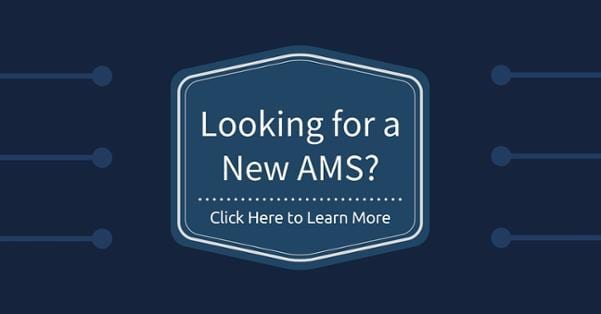
With each passing year, the question as to which association management software your organization should be using becomes even more important. Association services that include membership signup, membership renewal, event registration, sales, and marketing are increasingly being conducted through an organization’s website, which means that sub-par database management can stand between you and your annual revenue goals. This is why it’s not uncommon for an association to ask itself whether it’s getting everything it needs out of its current AMS or if it should cut loose and purchase a new platform.
Often, an organization then turns to someone like Wes Trochlil, president of Effective Database Management, to answer this question. Trochlil has spent 25 years working in the association space, and for the last 15 years he’s helped organizations choose and implement database management systems. He’s watched firsthand as associations have struggled to maximize the value of their AMS platforms and he helps them decide whether it’s worth the investment, in both time and money, to purchase a new software solution or simply squeeze more out of their current one. We interviewed Trochlil about the questions any association should ask itself before investing in a new AMS.
How long has it been since you purchased a new AMS?
Trochlil always tells his clients that they should be able to get seven to 10 years of use out of any new AMS. “Within seven years, the technology may have changed enough or their business model may have changed enough that it requires them to go shopping again,” he said. So even if you’re happy with your current system, you should do your due diligence once every seven years to ensure you’re not missing out on new technological offerings.
Have you upgraded to the latest version of your current AMS?
It’s common for a client to tell Trochlil that it’s not getting everything it wants out of its AMS — only for Trochlil to then find out that the client’s version is dozens of software updates behind the current iteration and it hasn’t been upgraded in half a decade. “In most cases, the [AMS] vendor at one point had released an upgrade but it was more or less broken — it wasn’t a good upgrade — so the association waited to install it, and then eventually inertia took over,” he explained. “Then they didn’t take the next upgrade, then they were two upgrades behind, and then three upgrades behind, and then all of a sudden it was too much work to catch up and so they just let it go.”
How’s your relationship with your software vendor?
Most organizations, especially smaller ones, lean heavily on their vendors in order to troubleshoot problems and customize their software. So the client-vendor relationship is just as important as the software itself. “Do they have a positive relationship with the vendor? Do we trust it or view it as a partner, or is there an antagonistic relationship?”
Are there glaring holes in your current software?
These usually come in two forms. The first is a lack of functionality. “An example of that usually occurs with integration of the website,” Trochlil said. “If my customers have a difficult time doing business on the website, then the AMS isn’t truly functional.”
The second is an inability to extract a certain kind of data from the AMS. “A lot of times clients come to me and say, ‘Our system has all kinds of data in it but it’s very difficult to get the data out, and so of course data is useless if you can’t get it out.”
Is your AMS cost effective and efficient?
The entire point of an AMS is it’s supposed to be saving you time and money, freeing up your resources so you can focus on other tasks. Trochlil explained that new generations of software often offer more functionality for the same amount of money compared to older systems. “The cost won’t necessarily come down [if you switch to a new system], but the value for the dollars will increase dramatically,” he said. “What I mean by that — for the dollars they’re already spending, they should be getting a lot more functionality than they currently have.”
***
Switching to a new AMS can be stressful and time consuming, so the decision to do so should never be taken lightly. That being said, holding onto a legacy system just because you fear change can mean you’re missing out on offering your members the best-available services. The above questions are a good start toward determining a course of action and ensuring that your association thrives with an AMS that’s right for both the organization and its members needs.
Meet Wes Trochlil
 Wes is president of Effective Database Management, located in Hamilton, VA. For over 25 years, Wes has worked in and with over a hundred associations, non-profits, and membership organizations throughout the US, ranging in size from no staff (all-volunteer) to over 700. In that time Wes has provided a range of consulting services, from helping organizations select and implement data management systems, to using the database and data for improved marketing and communications, and advancing the organization’s mission.
Wes is president of Effective Database Management, located in Hamilton, VA. For over 25 years, Wes has worked in and with over a hundred associations, non-profits, and membership organizations throughout the US, ranging in size from no staff (all-volunteer) to over 700. In that time Wes has provided a range of consulting services, from helping organizations select and implement data management systems, to using the database and data for improved marketing and communications, and advancing the organization’s mission.
Having written over 100 articles and hundreds of blog posts, Wes is the most published author on data management in the association market. In addition to his articles, Wes is also the author of “Put Your Data to Work: 52 Tips and Techniques for Effectively Managing Your Database,” published by ASAE.
Prior to starting his own consulting firm, Wes has nearly ten years experience working in associations as director of membership and marketing. He has worked for four national and international trade associations, serving as Director of Membership, Marketing, Customer Service, and Communications. With all four associations, Wes was responsible for managing the association’s database, from membership databases of less than 1,000 records to fully integrated databases containing over 100,000 membership, publication, and seminar registration records.

